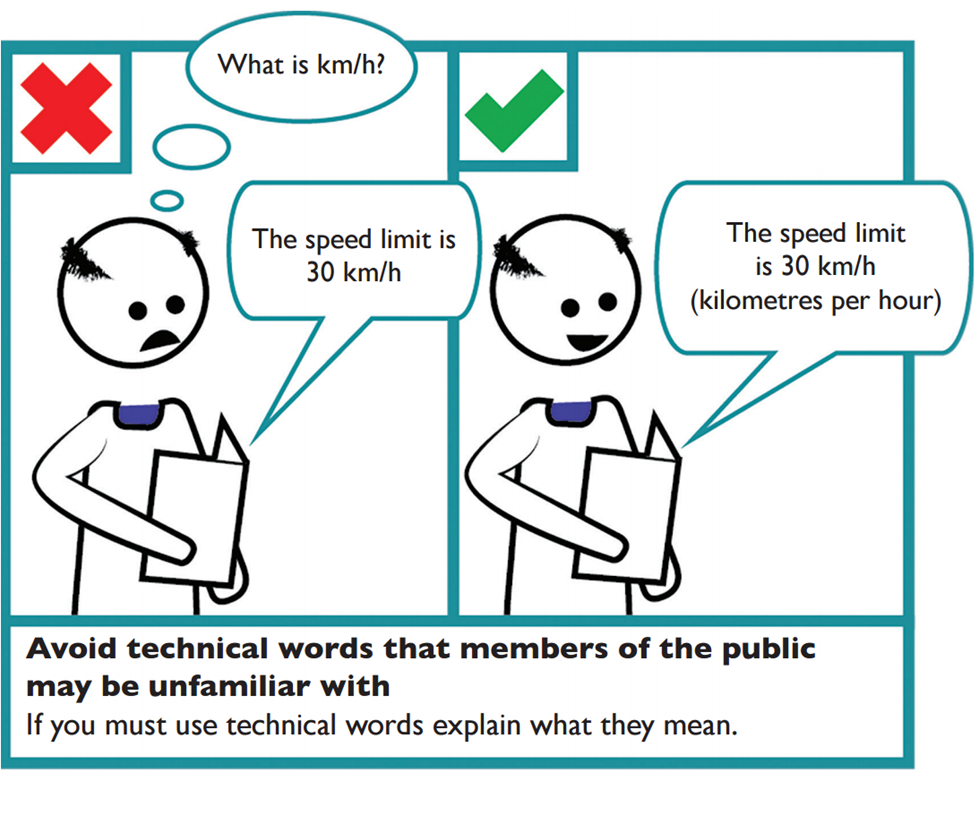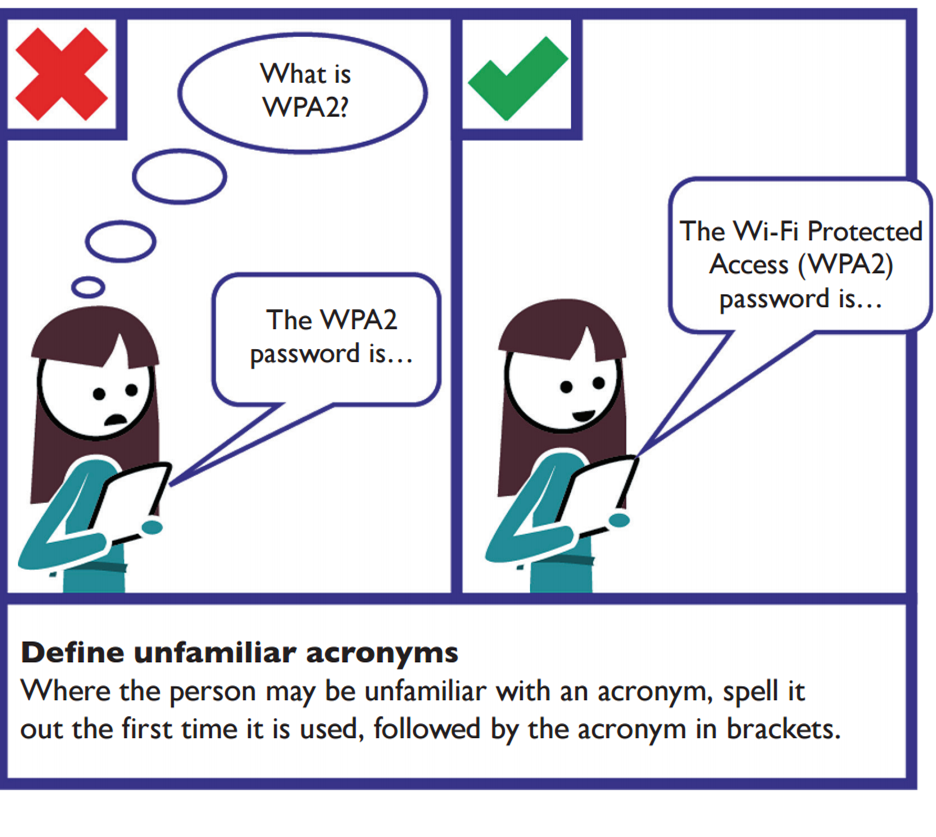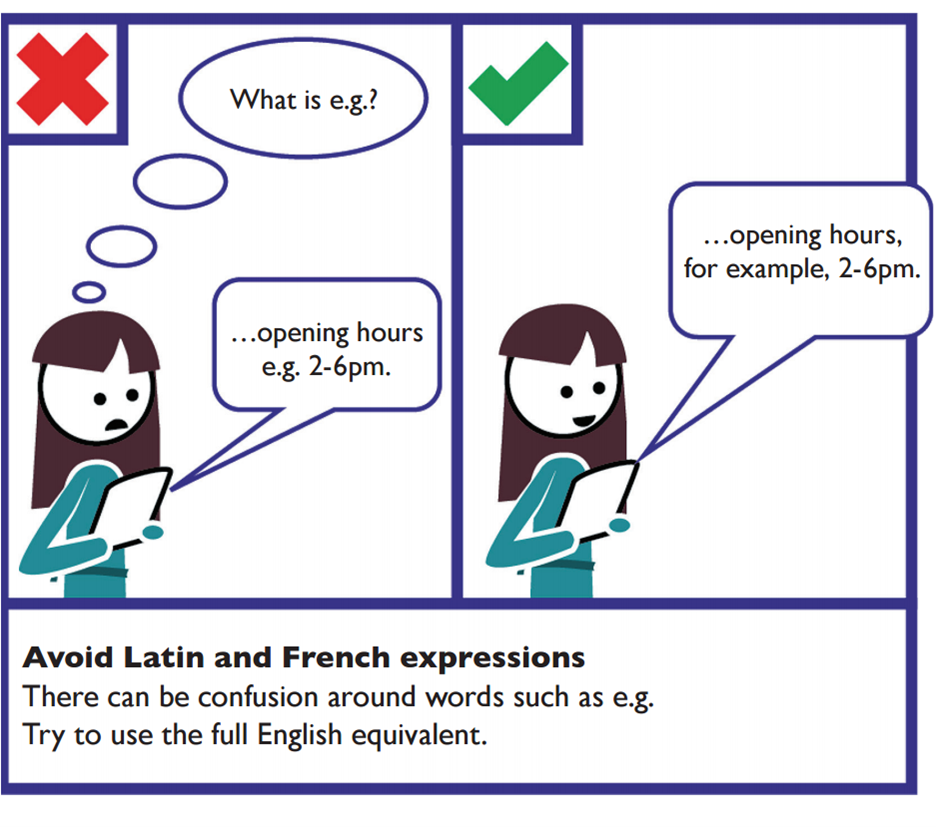Techniques
Do not assume that everyone is familiar with the subject area of your site
- Avoid technical jargon, colloquialisms, slang, organisation or department speak – change these terms into everyday language.
- Unless commonly recognised, provide the full word or phrase for any acronyms, initialisms and abbreviations, the first time they are used in a web page or document. For example, “National Aeronautics and Space Administration (NASA)”
- Avoid Latin and French expressions. Abbreviations such as ‘e.g.’, ‘i.e.’ and ‘etc.’ can be confusing - use the full English equivalents such as ‘for example’, ‘that is’ and ‘and so on’, instead. Include non-English terms for which there is an English term available, such as vis-à-vis (in relation to).



Be concise
- Cut out excess words and ‘fluff ’(see examples);
- Aim for content to be about half the size of the equivalent printed document.
- Only include content that is relevant to the subject and to your audience
Write content for low literacy
Writing content for lower reading levels benefits users with cognitive impairments, those for whom English is a second language, and users who may be distracted while reading.
- Avoid 'big' words just for the sake of it;
- Avoid contractions (don’t, didn’t, couldn’t);
- Use simple sentence structures that avoid the need for extensive and complex punctuation;
- Be direct. If users need to complete a task, tell them - avoid subtlety.
Use an active rather than a passive voice
Almost every resource on writing effective English provides a section that explains the importance of avoiding the passive voice.
- Identify who is doing the action and making them the subject of the sentence;
- Active voice helps with being concise – it is less wordy and more direct.
Use an informal writing style
- Use 'you' and 'we' wherever possible.
Use supporting images and graphics to aid explanation
- Some users may rely on icons or symbols to understand content
- Always ensure icons are commonly used and easily identifiable – unfamiliar icons can be problematic to some users with cognitive impairments
- Some users rely on clear, literal text and may not understand metaphors. For example, instead of saying “Early bird price”, say “Price for booking early”.
- Always use a text label together with an icon, do not rely on iconography alone.
Examples
Table 1 - Examples of what to and what not to say
| Do not say… | Do say… |
| "One must endeavour to ensure that simplicity is stringently upheld in order to facilitate comprehension” | “Keep it simple” |
| “In order to come into possession of” | “To get” |
| “Submit” (on a form button) | “Subscribe now” |
| “The decision was made by Tom” | “Tom made the decision” |
| “Links to resources should be provided” | “Provide links to resources” |
| “e.g.”; “i.e.”; “etc.” | “for example”; “that is”; “and so on” |
References
WCAG 2.1
- 3.1.4 Abbreviations (AAA)
- 3.1.5 Reading Level (AAA)
Further reading
- Readability (Yale University)
- MDN Web Docs - <abbr> element
